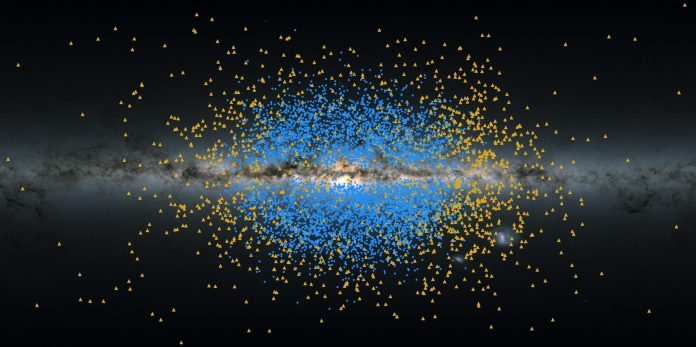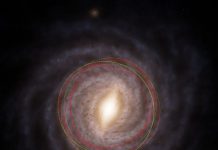
The Gaia space telescope, managed by the European Space Agency (ESA), has made a remarkable discovery about our galaxy, the Milky Way.
Researchers have identified two ancient streams of stars, named Shakti and Shiva, which formed over 12 billion years ago, contributing to the early stages of our galaxy’s development.
These star streams are among the oldest parts of the Milky Way, predating even the oldest regions of the galaxy’s spiral arms and disk.
Khyati Malhan, a lead researcher from the Max Planck Institute for Astronomy in Heidelberg, Germany, expressed astonishment at being able to identify these ancient star groups.
The discovery was made possible by the exceptional data provided by Gaia, which allowed the team to analyze the orbits, content, and composition of individual stars within the Milky Way.
Shakti and Shiva each hold the mass of about 10 million suns and consist of stars that are 12 to 13 billion years old.
These stars share similar orbits and compositions, hinting that they might have originated from separate fragments that merged with the Milky Way early in its history.
Located towards the center of the Milky Way, these streams were part of a region explored by Gaia in 2022, revealing it to be filled with the galaxy’s oldest stars.
Hans-Walter Rix, another key member of the research team, explained how these stars are metal-poor, lacking many of the heavier elements formed later in the universe’s life.
This region was fittingly named the Milky Way’s “poor old heart.”
The discovery of Shakti and Shiva represents a significant addition to our understanding of the galaxy’s earliest fragments and its initial growth stages.
Despite their similarities, the two streams have distinct characteristics. The stars in Shakti orbit slightly further from the galaxy’s center and follow more circular paths than those in Shiva. The names of these streams, inspired by Hindu philosophy, reflect the union of a divine couple creating the universe.
The Milky Way’s formation is believed to have involved the merging of long, irregular filaments of gas and dust, which eventually coalesced to form the galaxy.
Shakti and Shiva are thought to be among these initial components. This discovery, along with future data from Gaia, promises to unveil more about our galaxy’s complex formation process.
The research, part of Gaia’s ongoing mission to map the Milky Way, adds to our understanding of the galaxy’s family tree, including previously identified components like Gaia-Sausage-Enceladus and LMS1/Wukong.
Timo Prusti, the Gaia Project Scientist at ESA, highlighted the importance of Gaia’s precise data in filling gaps in our knowledge of the galaxy’s early history, allowing us to piece together a more complete picture of our cosmic origins.



